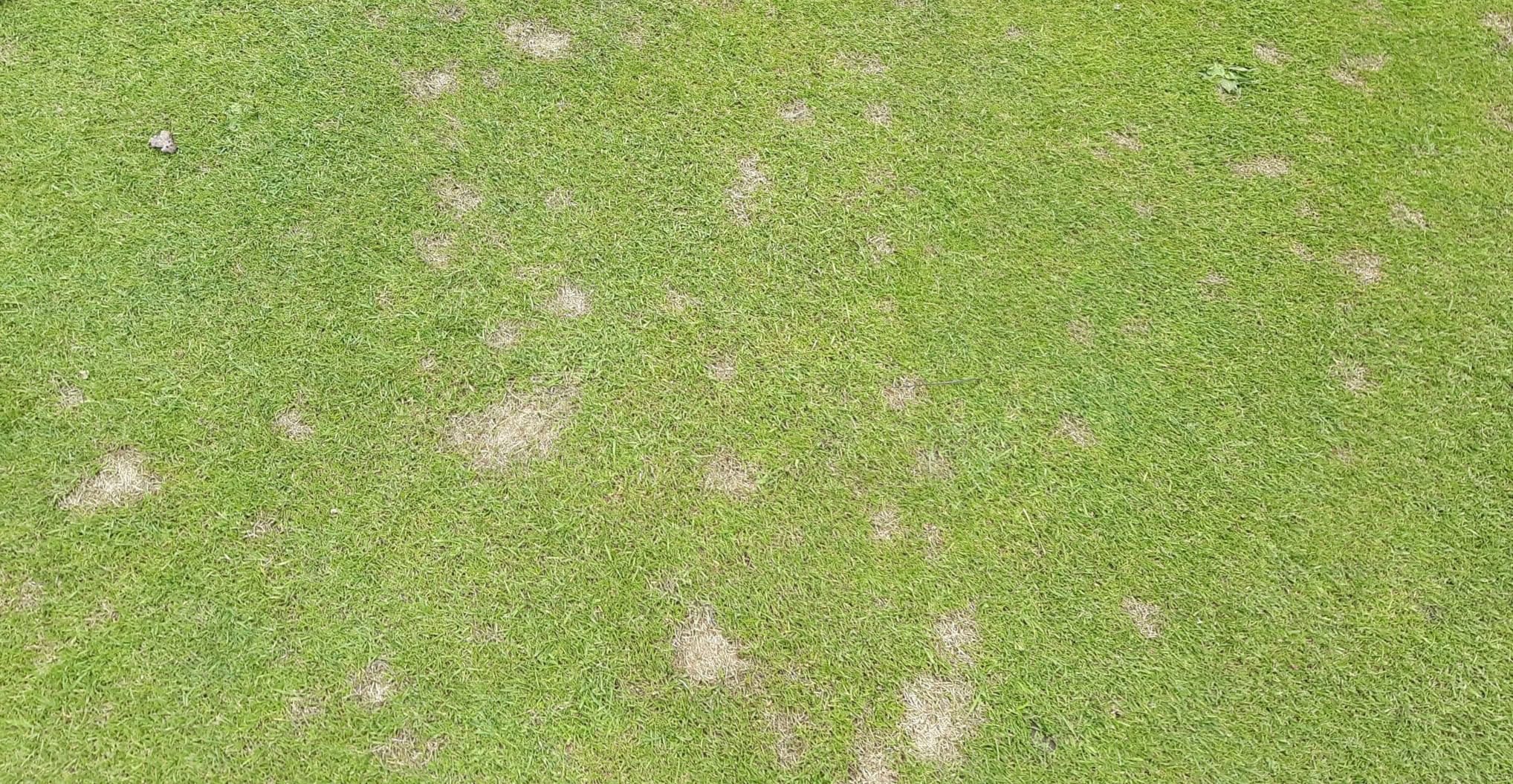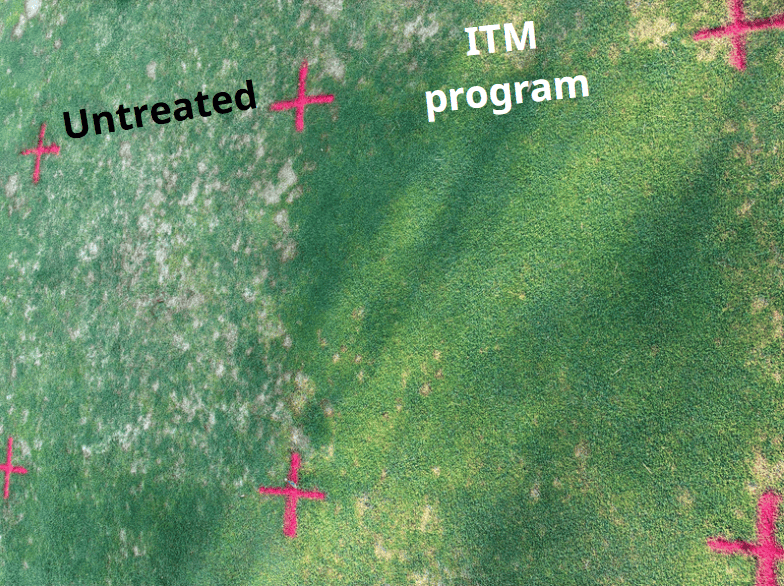What is a weed?
Could be a plant out of place, a plant growing where it’s not wanted or simply the wrong shade of green for the course you are looking to present.
Put simply a weed is a plant in the wrong place.
What’s the problem with weeds?
Weeds in managed sports turf can be problematic for several reasons:
- Reduced wear tolerance. Weeds don’t perform as well as turf under higher wear conditions. So, if you’re just looking at the turf and never walking on it, perhaps they are not an issue. But once heavy bodies, trollies and machines start moving over them the weeds will not be happy, and the playing surface can deteriorate rapidly.
- Playability. All playing surfaces want a ball to move over them smoothly and truly. If a ball hits an upstanding flowering weed stalk it’s going to affect the ball. Equally if a low lying weed parts the turf and forms a dip (I’m thinking Dandelion here) that can also affect play.
- Player expectation. As you can see from the results of the survey below.
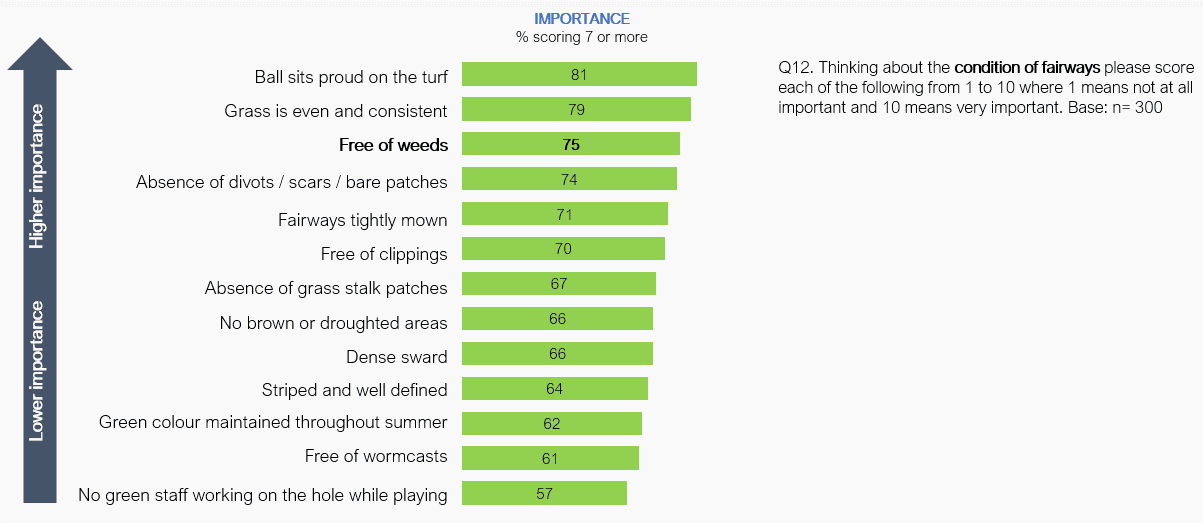
Draw a line in the sand
As we’ve said a weed is only bad if it’s in the wrong place. So it’s a good exercise for you and the team to define what’s acceptable and what crosses the line:
- No weeds in greens
- No weeds other than in rough/out of play areas
- No weeds on the course
Define what you/the club/the membership can and can’t accept on the weed front, it’s going to be different for every individual situation.
But I would highlight that weeds (and by that I mean native broad leaf plants (excluding invasive’s)) are not always bad.
Operation pollinator is a Syngenta project to encourage different management practices of appropriate areas of land to encourage wild flowers which offer food sources and habitat to bees & other pollinators.
Follow the link to read about the amazing work which has already been done.
Setting aside even a small area of deep rough or out of play; to scarify and seed wild flowers, or simply leave off the herbicide program and cut less frequently (better yet cut and collect) can be really beneficial to insect life. There is loads of info in the Operation pollinator pages if you are interested.
Leaving that to one side, once you’ve decided where you can and cannot accept weeds you need to make a plan.
There are really two angles to go at when it comes to stopping weeds invading turf: 1) Seed control 2) Opportunity suppression.
Seed control
The notion is simple, stop the seed = stop the weed. The reality is anything but simple!
The ‘seed bank’ is the collection of seeds waiting dormant in the soil (they can wait for years) for the right opportunity to flourish.
The most important thing missing for most seeds is light at the soil surface.
Don’t do it! But if you took a patch of turf, strimmed it right down to soil level and put a barrier over it to stop any further seeds landing, you’d be amazed at how many weeds sprung up.
Lets say you managed to achieve that for the whole course (probably not possible but lets just say). The next issue in your pristine sward would be new seeds coming in which would be almost as hard to stop.
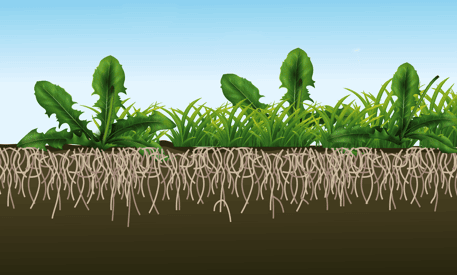
So many ways for weed seeds to invade a new area it makes your head hurt:
- Wind blown (some species can travel miles on air currents)
- Bird droppings
- On animals, attached to fur or fed on/carried
- Foot traffic, in the mud attached to boots from other sites/gardens
The list goes on…
Opportunity suppression
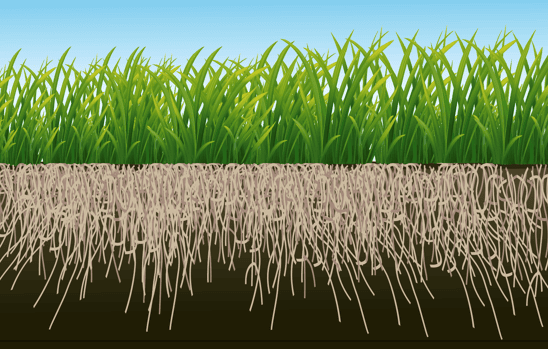
It can sound hopeless, but the good news is that the seed bank offers us a hint at part of the solution. As we’ve said a given seen needs an opportunity, a gap in the sward, exposure to light in order to take its chance.
So an important part of our weed control plan should always be opportunity suppression.
A healthy dense sward sees lower levels of weed invasion, not because there is less weed seed landing in that area, but because they are outcompeted by the grass.
It always comes back to turf health, adequate fertility, available moisture….. will all help to put the turf in the driving seat.
Think of the areas where you struggle with weeds the most, high traffic areas which may have led to turf loss, scorched areas of fairways in summer heat, shaded areas where you struggle to keep good turf cover etc.
Anything we can do to improve turf health will help the sward outcompete weed ingress.
Herbicides can still be essential even when we get everything right.
Herbicide
As with any intervention in turf, we want anything we apply to be as effective as possible to make sure we get the best from it.
If you’ve ever visited the Syngenta Jealott’s Hill R&D site, Berkshire, you’ll know the level of research they carry out on a huge range of herbicide technologies.
You can see the glass houses from space (if you zoom in really far).
Syngenta launched Overtake a few years back for turf, with 73 trials across 9 countries so we’ve learned a lot to help you get the best from it.
Thousands of R&D studies say the same thing, if you can target weeds when they are young and actively growing you have the best shot possible to get control.
Hence why I’m writing this blog, to get you to plan any spring herbicide interventions now, as it’s just around the corner!
Target foliar and avoid runoff:
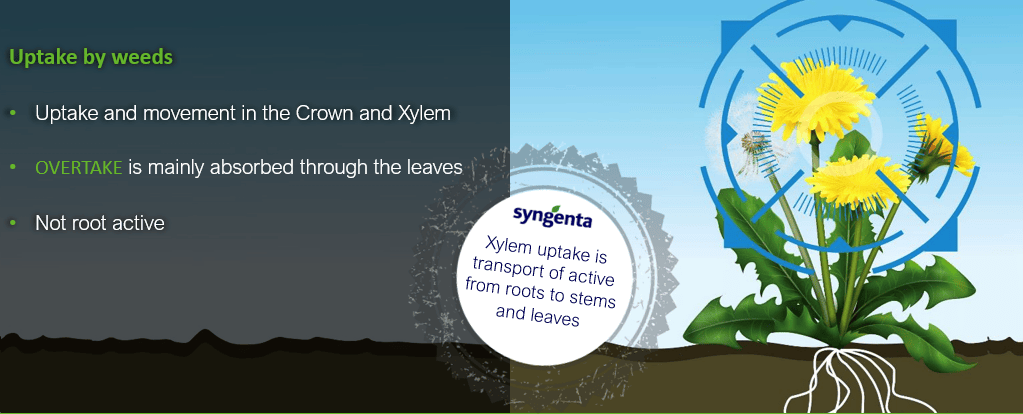
The R&D team did a lot of work to make sure the Overtake formulation was turf safe at low water volumes.
Which allows for a fast, and most importantly an effective application at 200L/ha water.
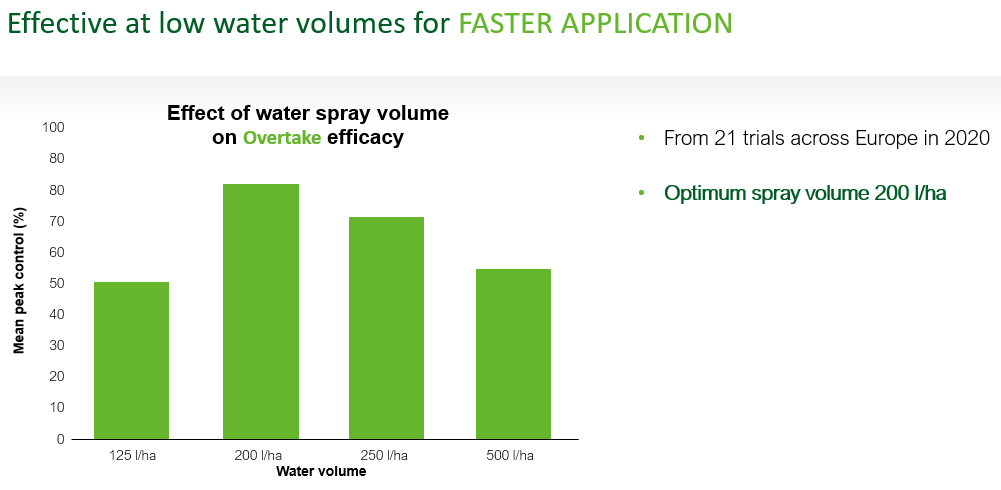
See more tips on getting on top of weed control here.
We’ve got another broadleaf herbicide we are attempting to register which I’m excited about, as it’s looking even stronger on some tough to tackle weeds (like plantain).
We are working on a selective graminicide registration behind the scenes so fingers crossed for that.
More on those when I’m allowed to discuss.


